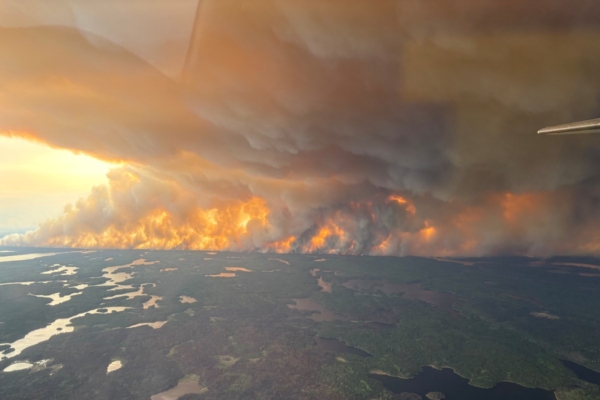In Western and Central Canada, a large number of wildfires have broken out, leading local governments to declare a state of emergency and forcing tens of thousands of people to evacuate. The escalating fires are also emitting harmful smoke into various major cities in the United States, triggering air quality alerts in multiple regions.
According to the Canadian Interagency Forest Fire Centre, as of Thursday (May 29), there have been over 170 wildfires across Canada, with roughly half of them still not under control. The national preparedness level was raised to Level 5 on Thursday, an unusually high level for this early in the fire season. Last year, Canada did not reach this level until July 15.
The provinces of Manitoba and Saskatchewan in Canada have already declared a state of emergency. Most areas of Canada, from the Northwest Territories and Alberta to Ontario, will face “extreme” fire risks on Friday. This is the highest level in Canada’s fire risk rating system.
Computer models show that smoke from the wildfires in Western Canada will spread to the Upper Midwest and Great Lakes regions of the United States on Friday and throughout the weekend.
The smoke may be in the mid to low levels of the atmosphere, which could reduce visibility and air quality in some areas.
Authorities in Minnesota have issued air quality alerts for the northern part of the state. The warning predicts that particulate levels are expected to reach “unhealthy for everyone” levels. On Friday, similar alerts were also issued for northern Michigan and the entire state of Wisconsin.
These alerts mean that people should avoid strenuous outdoor activities, especially those with heart conditions and asthma, and should keep windows shut to prevent smoke from entering indoors.
On Friday, areas where air quality or visibility may significantly drop include Duluth, Silver Bay, and Grand Marais in Minnesota; Houghton, Marquette, and Iron River in Michigan; and Ashland, Wausau, Green Bay, Madison, and Milwaukee in Wisconsin.
Due to the smoke, the Arrowhead region of Minnesota had the worst air quality in the United States on Friday morning.
Moderate smoke may reach Chicago, St. Louis, and Detroit on Friday evening, then shift towards the east on Saturday.
The National Weather Service in the United States stated that smoke in the mid to low levels in parts of the Midwest may persist throughout the entire weekend, with forecasts indicating that the upper-level smoke column will further move southward across the plains.
(This article referenced reports from CNN and The Washington Post)

